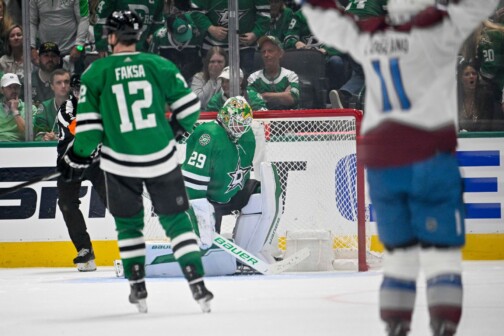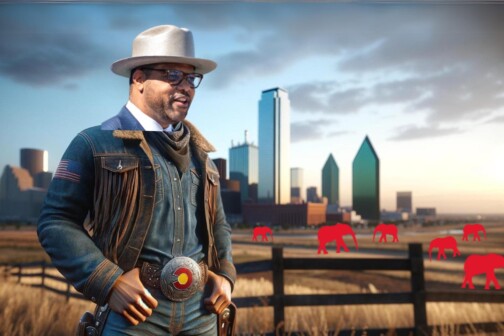There was a piece in the Dallas Morning News yesterday about a trio of new parks that are being added downtown. In theory, that’s great. Downtown could use more greenspace. Turning parking lots into parks has to be a good idea 100 percent of the time. Everyone loves Klyde Warren Park, and that park is incredibly overcrowded. Why not share the wealth?
But will building new parks downtown automatically replicate Klyde Warren’s success throughout the urban core? Of course not. That’s not how parks work. What bothers me about the tone of the article and the idea driving the construction of these three parks in general is the assumption that turning parking lots into greenspace will absolutely generate the kind of activity common in successful parks. But that is not what has happened when Dallas has built parks downtown.
Forget Klyde Warren for a second. It is its own beast and we’ll return to it. Let’s instead think about two other parks downtown: Main Street Garden and Belo Garden. If you visit these parks today, you’ll discover that Belo Garden is an empty lot that functions as a visual and physical barrier contributing to the subdividing of Main Street as it runs through the core. Main Street Garden has a failed cafe and quickly aging amenities. They both have had issues dealing with the homeless population.
So what will Dallas get with these three new parks — three Klyde Warrens or three Belo Gardens?
The answer to that question is all about function. The problem with Belo Garden and Main Street Garden is they don’t operate at all like Klyde Warren. Klyde Warren is wildly popular and constantly teeming with life. That’s because its designers studied, digested, and then regurgitated onto the deck park everything that went into making New York’s Bryant Park — a park with an incredible amount of programming — such a huge success. It worked, even if Klyde Warren can feel a little too programmed. But from the food trucks to the playground to the book carts to the many performances and activities and on and on, Klyde Warren Park was designed as a destination. It is as much an event facility as it is a park.
Klyde Warren is so different from Belo Garden and Main Street Garden, it almost doesn’t feel right to call them all parks. Belo Garden is a kind of manicured public plaza. It looks nice enough, but it only offers passersby a few benches, a fountain kids sometimes play in during the hot months, and some grass for downtown pet owners. Main Street Garden is not much better. When it first opened, the cafe attracted lunch traffic and the playground was a hit, but the cafe doesn’t ever seem to be open and the playground looks smaller and shabbier each passing year. The park also featured superfluous design elements (what ever was the point of those big green shelters?) that now make the whole thing look a little run down.
There’s a larger point to make here about the way cities work in general. Just like successful cities, successful parks should offer a variety of uses that attract people and have something to do in them besides sunbathe, eat lunch, or watch the toddlers have fun. And successful parks don’t generate city life — they are the barometers that can measure whether or not the areas they exist in are already generating city life. Parks are successful when the cities around them are successful. If the streets are full of life, if the neighborhood attracts people for a variety of reasons throughout the day, then the parks will receive some of that activity. But if the city streets around a park are dead or monofunctional, the park will also be dead and derelict.
Klyde Warren taught Dallas an important lesson: because the city center itself does not yet have the street life and population to sustain regular old parks, successful parks in Dallas have to be open-air event facilities. Looking at the renderings of the new parks, however, it looks like the designers and backers have not fully appreciated this lesson. The most promising is Harwood Park, which will have a “ping pong alley” and space for concerts and events. Pacific Plaza will have some futuristic swings for the kids, but it mostly just offers lawn space and a big UFO-looking shade canopy. Carpenter Park is a strip of grass with a meandering path sitting on an island of land disconnected from the rest of downtown by DART’s awfully designed East Transfer Station. In other words, I don’t see a lot to do in these new parks. (UPDATE: As has been pointed out in the comments, I missed the fact that Carpenter Park is adding some basketball courts and a skate park, which is great.)
There’s a practical challenge here. It is very difficult and expensive to maintain a park like Klyde Warren, and we can’t expect every park in the city to be so intensively managed and programmed. That said, right now, what Dallas could use are parks that attract people more organically and without the need for such an intensive programmatic regimen. That’s a complicated way of saying that what Dallas could use is a a few parks with places to play. I’m not just talking about playgrounds. Playgrounds are fine; kids need a place to play. But what about us big kids?
What if Main Street Garden replaced its big green shelters with a basketball court? What if Belo Garden turned the silly dividing wall that blocks it from the adjacent high-rise apartment building into a series of handball courts? How about a tennis court? What about some futsal courts? Or here’s an idea and a challenge: if someone builds a park downtown with a wall and spray paints a big box with an X in it, I’ll personally organize the city’s first stick ball league.
These are simple and cheep amenities that would attract people to the downtown parks. And parks that attract people attract more people. I don’t play basketball, but I have spent many hours leaned up against the chain link fence at the West Fourth Street stop in New York’s Greenwich Village watching the games on the courts. Build some courts around downtown and people will use them. Then people will watch people use them. There is only one true handball court in Dallas — a concrete wall in Northwest Dallas — and it is always packed because people seek it out. Imagine if there were a few mini-soccer courts that downtown workers could organize lunchtime tournaments. The most vibrant action in downtown Dallas on any given afternoon is found on the basketball courts at the downtown YMCA. What if some of this play was drawn outside? Rather than investing in silly architectural features, how about a public shower?
I could go on, but the point is: this isn’t rocket science. It’s simple. Stop building parks that look designed to win design awards. Build parks with basketball courts.






